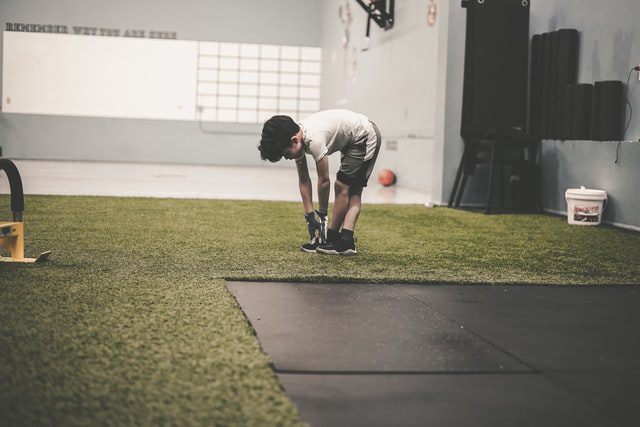Obesity is the underlying cause of many health problems. The statement is a heads-up for people of all ages, including children and adolescent teens. According to the Centers for Disease Control and Prevention (CDC), the prevalence of obesity in individuals in their early years is alarmingly rising across the world. Let us take the example of the children and adolescents aged 2-19 years residing in the U.S. for the year 2017-2018. The overall prevalence of obesity was 19.3% for children and teenagers. This denotes a figure of about 14.4 million children and adolescents. The prevalence of obesity was 13.4% for children aged 2 to 5 years, 20.3% for children aged 6 to 11 years. While for adolescents of 12 to 19 years of age, the figure was 21.2%. One can only imagine the health status of children and young adults in later years when they continue to face obesity. However, the best work out for children and adolescents will help.
The primary reason for most weight gain and obesity is insufficient activity, sedentary lifestyles and unhealthy eating habits. The ongoing pandemic of COVID-19 and lockdowns have not helped the situation either when the younger generation is restricted within households with less movement and physical activity. COVID-19 has defined new norms. So one must decide to remain physically active even under lockdown circumstances. This will contribute to the physical fitness of the young and upkeep their mental and emotional health.
Health experts at the U.S. Department of Health and Human Services suggest an hour of moderate to high-intensity workouts daily. This improves focus, attention, physical endurance and a healthy outlook in the early teen years and beyond.
Basic Rules Of Activity For Children And Adolescents
The basic rules for exercise are dependent on the age of the child. For teenagers, three kinds of activities should be considered including:
- Aerobic exercises – Activities like running, walking, swimming or cycling for at least three days a week
- Strength training exercises – Moderate intensity strength training like climbing or doing push-ups three days a week to build muscles
- Bone-strengthening exercises – Activities including jumping and running to strengthen bones and bolster joints
These physical exercises should be designed to be included in a child’s 60-minute moderate activity schedule.
What Comprises A Moderate Activity
Moderate-intensity exercise is the one that:
- Raises the heart rate
- Increases the breathing rate
- Increases the body temperature to warm
- Can talk with intervals
Playground activities in school, walking a dog, riding a cycle on ground level, skateboarding, etc., are counted as moderate-intensity exercises. According to the age groups, some of the best workouts can be done easily by children and young adults, pandemic or no pandemic.
Best Work Out For Children Under Five Years Of Age
For this age group, the rule is this: the more, the better. At least three hours of physical activity spread over the active hours of the day should be the target. Physical activity can start the pattern for maintaining a healthy weight, important especially later in life.
It is crucial to keep the activities for playing and not competition because they are learning and developing skills in this age group. Keeping your expectations realistic helps in grooming a child mentally as well. For example, swimming at this age would not mean perfect strokes but simply playing in the water, making bubbles, underwater exploration to learn breath control, floating, and so on.
These could include outdoor and indoor activities like:
- Tummy time; supervised placement of a baby or toddler on his/her stomach (builds neck and shoulder muscles)
- Playing with blocks and other objects
- Messy play; spending time with paints, sand, water, dough, slime, food ingredients, etc.
- Jumping on trampolines, with bounce space balls, etc.
- Walking
- Dancing
- Swimming
- Playing with a football
- Hide and seek, treasure hunts
- Cycling
Best Work Out For Children Above Five Years And In Their Early Teens
The activities adopted should aim to strengthen muscles and bones in this age group. It helps the children in their physical and cognitive growth. By the age of six to eight years, a child can throw a ball, pitch a baseball, pedal a two-wheeler cycle and do flexible exercises confidently. Exposing them to diversity would polish their skills in this age.
Children belonging to ages 9 to 11 have developed a sense of competition and accuracy at physical activity. High-level games like tennis or golf can be started at this age. Letting a child compete in small events can boost his/her self-confidence.
Children aged 12 to 14 years are more inclined towards personal grooming. It is time to introduce them to bodyweight exercises. Discourage weight lifting till they hit puberty. A teenager 15 years or beyond can lift weights and resistance train with proper form.
All kinds of indoor and outdoor activities are recommended for children and adolescents.
- Walking
- Running
- Games such as tug of war
- Skipping with ropes
- Swinging on playground equipment bars
- Gymnastics
- Indoor rock climbing
- Sit-ups, press-ups and other similar exercises
- Basketball
- Dance
- Football
- Tennis
- Resistance exercises using exercise bands, weight machines or handheld weights
- Aerobics
- Running and jogging
- Playground games like netball, hockey, badminton
- Rope skipping
- Martial arts
Introducing appropriate types of exercise according to age is recommended. Keeping children in all ages stimulated and busy through physical exercise isn’t only helpful for their physical health, but also their mental state.
References








